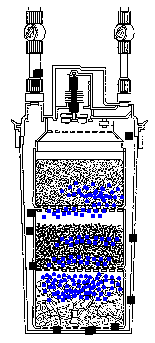cmontgomery
Member
I have never run active carbon on any of my tanks. I just wanted to see how many people do and why.
fishcrazy said:Carbon operates by chemical filtration. It is an excellent way to strip many Dissolved Organic Compounds that yellow the water and/or make your tank stink. It can also be useful at removing some excess heavy metals, aleopathic chemicals (chemical warfare), etc.
A lot of people leave their carbon in too long and it becomes a biofilter like Boomer said. Using smaller amounts of carbon and leaving it in your tank for a short period of time is better than using a lot of carbon and leaving it in for a long time. Make sure you rinse it well prior to use. Preferably, soak it in RO/DI water for 24 hours prior to use.
fishcrazy said:Carbon operates by chemical filtration. It is an excellent way to strip many Dissolved Organic Compounds that yellow the water and/or make your tank stink. It can also be useful at removing some excess heavy metals, aleopathic chemicals (chemical warfare), etc.
A lot of people leave their carbon in too long and it becomes a biofilter ***like Boomer said***. Using smaller amounts of carbon and leaving it in your tank for a short period of time is better than using a lot of carbon and leaving it in for a long time. Make sure you rinse it well prior to use. Preferably, soak it in RO/DI water for 24 hours prior to use.


